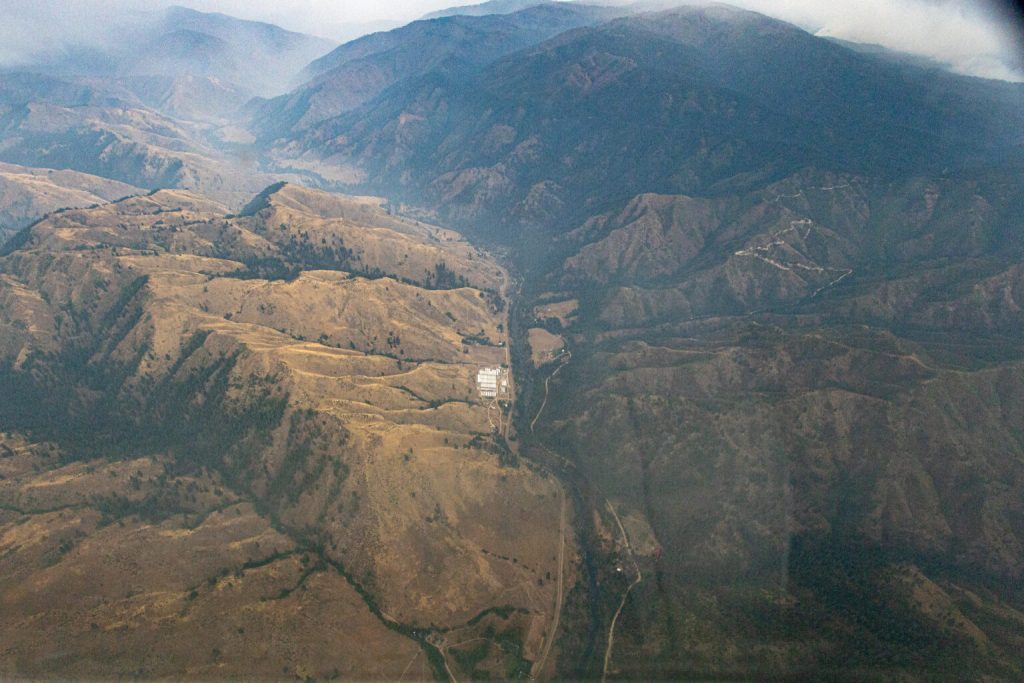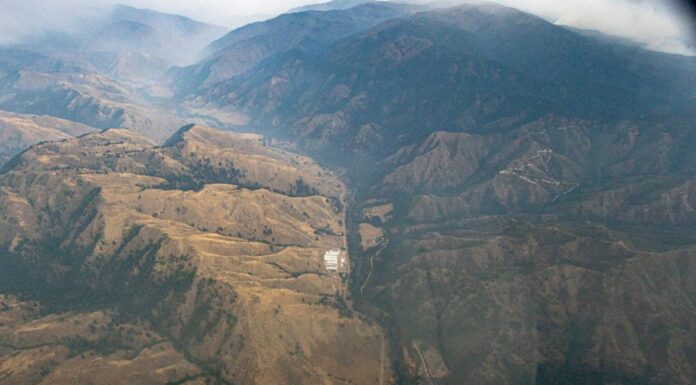
Idaho Copper’s CuMo project is one of the largest, most promising copper ventures in the United States. As demand for copper surges to support infrastructure and renewable energy goals, Idaho Copper has positioned itself to deliver a reliable supply of this critical resource, with a vision grounded in sustainability and efficiency. Located in the heart of Idaho, this massive deposit has an impressive copper reserve and comes with some unique advantages, from lower anticipated extraction costs to minimal environmental impact and strong community engagement. With a solid framework for low-cost, large-scale production, the CuMo project is geared to reshape the copper landscape in the U.S. and address future supply needs.
We sat down with Idaho Copper CEO Andrew Brodkey to learn about the strategies, future potential, and the leadership driving it forward, especially as they prepare to expand drilling and refine their resource estimates.
Idaho Copper is advancing one of the largest untapped copper projects in the United States. Could you explain what makes this project unique and why it is critical to meeting future copper demand?
Basically, for the CuMo deposit—the salient characteristics are its massive size, projected low-cost extraction, great location in the US in Idaho, and anticipated low Capex and capital intensity and other very favorable competitive metrics compared to its peers.
Your project has only drilled 60% of its site so far. What kind of potential do you see in the remaining 40%, and how does this shape your long-term vision for the Idaho Copper Project?
The current resources from the 2020 Preliminary Economic Assessment (PEA) identified, in the categories of Measured and Indicated (M&I), and Inferred Resources, approximately 8 billion pounds of copper, 3.5 billion pounds of molybdenum, and almost 500 million ounces of silver. The remaining 40% of drilling planned for 2025 (beyond some geotechnical holes) entails infill work which should help move some of the Inferred Resources to the M&I level of certainty, as well as converting some of the Indicated category to the higher level of Measured. In addition, there are areas to the southwest of the deposit which are prospective for further drilling to augment the Resources. Since CuMo as it sits today is a very large deposit, our vision is to start with relatively modest initial capital, but where with additional capital to construct complementary facilities, metal production can be expanded. Depending on how we design the operation, the Resource size is large enough to potentially last for greater than a 30-year mine life.
How does your leadership and experience align with Idaho Copper’s goals, and what new directions do you expect under his leadership?
I have worked for 35 years in the mining industry as a mining engineer and mining lawyer, as a C-Suite executive (VP, General Counsel) with Magma Copper, a NYSE- traded spinoff from Newmont Corp., and similar roles (VP, Business Development and VP, Associate General Counsel) with BHP Copper after our merger with BHP Billiton, the world’s largest mining company). I also served as CEO of four publicly traded junior exploration companies. This background includes virtually every issue that one can see with the mining business and mining projects. In particular for CuMo, I have considerable experience with technical work for major copper projects supporting PEA’s, Pre-Feasibility Studies (PFS), Bankable Feasibility Studies (BFS), financing, and importantly, permitting of major mining projects. My vision is to (1) complete the technical work necessary to produce an updated PEA with highly economically valuable results superior to the 2020 PEA, (2) progress CuMo with drilling, metallurgical and related work through a PFS, further demonstrating and enhancing the economic viability of the project, and (3) take CuMo through all the permitting, engineering and additional studies needed for a BFS, leading to financing, construction and commissioning of the mine.
Idaho Copper’s project benefits from high-value co-products such as molybdenum and silver. Could you explain how these co-products contribute to the overall economics of the project?
The ore at CuMo also contains recoverable rhenium (a defense metal) and tungsten. Molybdenum is an important metal used primarily in high-quality steel applications, for strength, corrosion resistance and other properties. Since molybdenum prices are roughly 5 times the price of copper, and we expect that somewhat equivalent volumes of both metals will be produced, this metal will actually provide the bulk of the revenue generated. Silver is abundant but contributes a much smaller number to the revenue side.
You’ve been actively lobbying to add molybdenum to the Critical Minerals list. Could you elaborate on the significance of this effort and how it would impact Idaho Copper’s strategic goals?
Strategically, Idaho Copper and the industry have backed off somewhat from these lobbying efforts for both copper and molybdenum, largely because the available government funding under the Infrastructure Act of 2020, and the Inflation Reduction Act of 2021 (IRA) does not depend on the classification by the US Geological Survey (part of the Department of the Interior) of copper or molybdenum as Critical Minerals. Instead, the Departments of Energy and Defense consider copper to be a “Critical Material” that qualifies for funding under these statutes. Following the PEA update, Idaho Copper expects to apply for project funding from the DoE and/or DOD for the next phases of work.
MineSense XRF scanning testwork has confirmed ore sorting applicability at your CuMo project. How does this technology enhance your mining operations, and what benefits does it bring in terms of efficiency or cost?
CuMo is a copper-molybdenum porphyry deposit, but not a typical porphyry where the mineralization is somewhat evenly distributed. Rather, CuMo is a “stockwork” porphyry where most of the metals of value exist in thin veins. One of the main keys to improving the economics of CuMo lies with the ability to separate these thin, metal-bearing veins from the gangue, or waste material in the ore. This is known as “ore sorting,” and MineSense testwork, with bucket-level XRF sensor sorting of run of mine blasted material, has demonstrated that ore sorting can be successfully applied to ore from CuMo. Ore sorting will enable Idaho Copper to send higher grade material to and construct a much smaller concentrator than was proposed in the 2020 PEA, saving considerably on Capex and Opex. Waste will be separated and disposed of, and low-grade ore will be stockpiled for further separation and potentially heap leaching.
With a 28-year life of mine (LOM), how does Idaho Copper plan to sustainably manage its resources and ensure long-term profitability?
The mine life cited of 28 years is from the 2020 PEA. This is subject to refinement in the PEA Update, and, with additional Resource expansion potential, the mine life could conceivably be much longer. If a mine is eventually financed and built, we will support the state of Idaho, Boise County, Idaho City and the communities nearby during our tenure, ensuring that operations meet and exceed all applicable environmental laws, rules, regulations and standards. We commit to being a “Good Neighbor” and envision securing support for a Good Neighbor Agreement, similar to what Resolution Copper has generated in Arizona for its large copper project.
The copper supply deficit is a growing concern globally. How does Idaho Copper plan to position itself as a major player in addressing this shortage, especially in the U.S. market?
It should be noted that the supply/demand and growth fundamentals for molybdenum are similar to copper.
We anticipate the projected initial yearly copper output from CuMo through a sulfide concentrator to conservatively average in the range of 30 million pounds, molybdenum up to 50 million pounds, with about a million ounces of silver. 2023 US copper demand was roughly 1.8 million metric tons, or 4 billion pounds. While CuMo as presently envisioned would produce only around 1% of current US demand, this number could be ramped up if mining and sulfide processing facilities are expanded. The large stockpile of lower-grade copper ore presents a strong upside for additional metal recovery, as current technologies to leach low-grade copper are being rapidly developed. It is important to note that production will exist through the long mine life which we believe will be the case at CuMo.
You’ve emphasized the importance of developing your project in a jurisdiction with excellent regulations. How does Idaho’s regulatory environment support your operations, and what advantages does it offer?
Idaho is an established, western US mining-favorable state, with high rankings from the Fraser Institute and the Mining Journal World Risk Report. State of Idaho regulations and those of the federal government through the US Forest Service are well-understood. Agency staff are very familiar with mining laws and regulations, and projects usually can navigate the permitting and approval processes with a strong degree of certainty. There also is generally positive support from the local communities who see the economic and other benefits that a meritorious mining project can bring to the state and Boise County.
There are of course detractors, normally from the NGO sector who are on principle opposed to any extractive project. But in our view, CuMo does not suffer from legacy environmental problems, and we strongly believe that the science will ultimately bear us out such that there will be no material adverse environmental effects from the project preventing its development.
Looking ahead, what should investors and stakeholders expect from Idaho Copper in terms of exploration milestones, project development, and new technologies over the next year?
- Yet this year or very early in 2025, we expect the US Forest Service to issue a Record of Decision and Finding of No Significant Impact approving the CuMo Exploration Plan of Operations which will allow Idaho Copper to carry out a drilling campaign in 2025.
- In Q1 2025, our aim is to publish the Updated PEA, which should be a dramatic improvement over the 2020 report.
- At the same time, the company plans to uplist from the US OTC securities exchange to a more senior market, either the NYSE-AMEX or the NASDAQ, which will aid in ability to raise capital for our operations and provide more liquidity in our shares.
- The next milestone will be the announcement of the undertaking of the commencement of the drilling field work which by permit can start in April.
- Finally in 2025, we plan to announce the beginning of the work towards a Pre-Feasibility Study, which will incorporate the eventual results of the drilling program, as well as additional studies on metallurgy, potential stockpile leaching, revisions to the geologic model, and baseline environmental work.
The above references an opinion and is for information purposes only. It is not intended to be investment advice. Seek a licensed professional for investment advice. The author is not an insider or shareholder of any of the companies mentioned above.
The post Inside Idaho Copper’s (OTC:COPR) Vision to Meet Rising Copper Demand with the CuMo Project appeared first on MiningFeeds.






